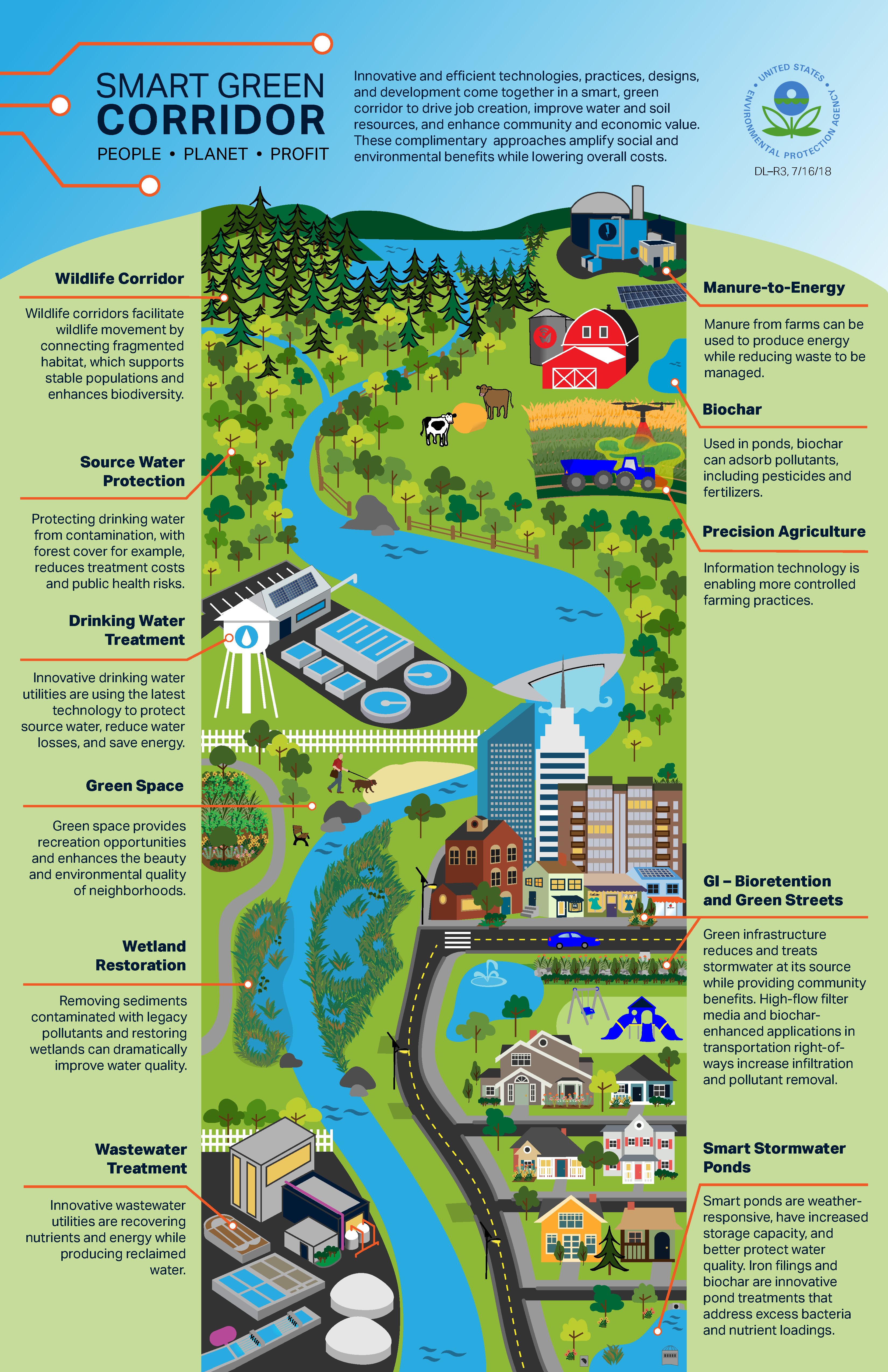WHAT IS A SMART GREEN CORRIDOR?
The flow of water, energy, and waste products is not restricted or defined by jurisdictional boundaries, land use, or business sector. Regulatory frameworks often separate these sectors and their subsectors—for example drinking water, wastewater, and stormwater. However, they are highly connected.
Reducing losses in drinking water distribution systems saves energy. Resources harvested from wastewater streams can be used to increase agricultural productivity while reducing the space required for farming practices. Integrated water management practices that protect source waters by retaining runoff can lower drinking water costs.
Technology and innovation play a critical role in effectively and efficiently connecting the water, energy, and waste sectors. Creating these connections optimizes the inherent value of these sectors while reducing costs. The result of intelligent and thoughtful investments that bridge various sectors and infrastructures is a new, connected corridor—a Smart Green Corridor (SGC)—that drives job creation, improves water quality and soil conditions, enables healthier farming operations, and enhances community and economic value. Some communities are already creating SGCs, with strong interest in replicating this approach. The infographic (right) provides further information on the SGC approach, and additional SGC resources will be posted in the near future.

